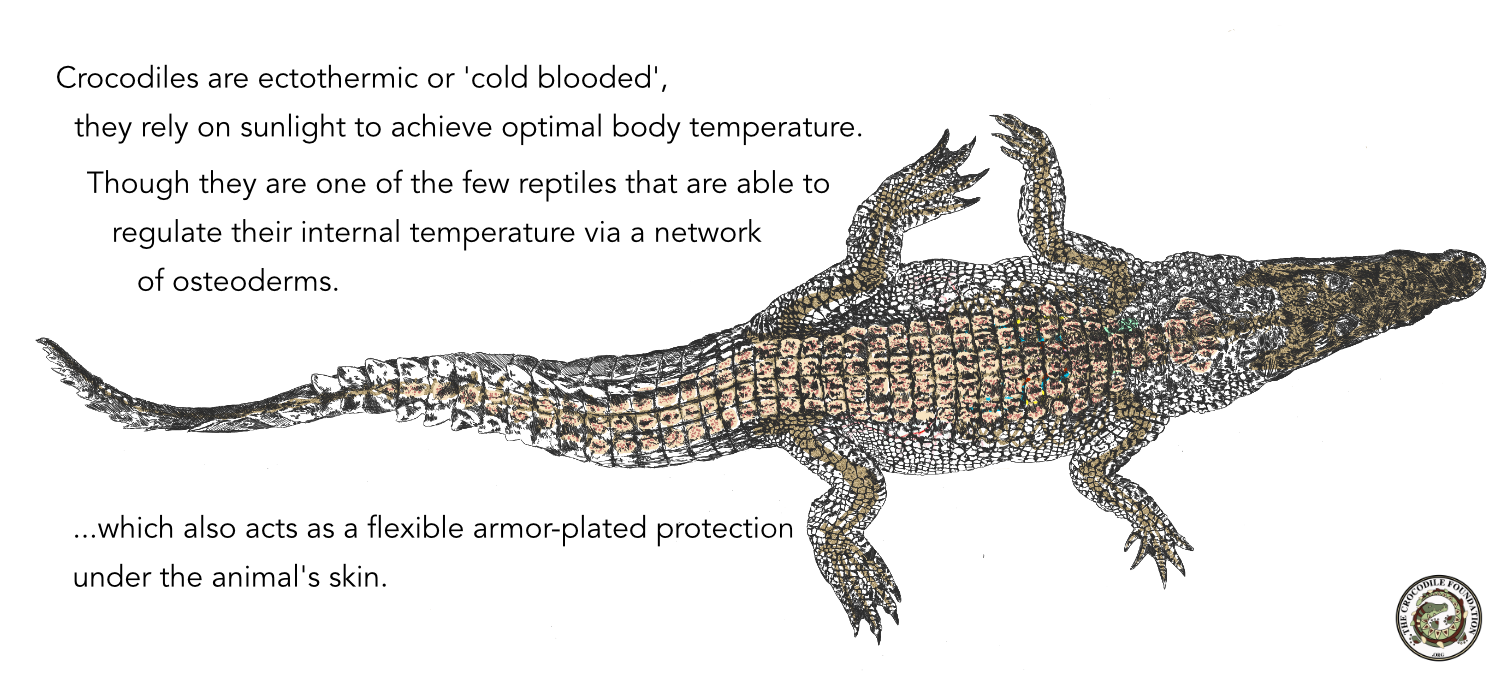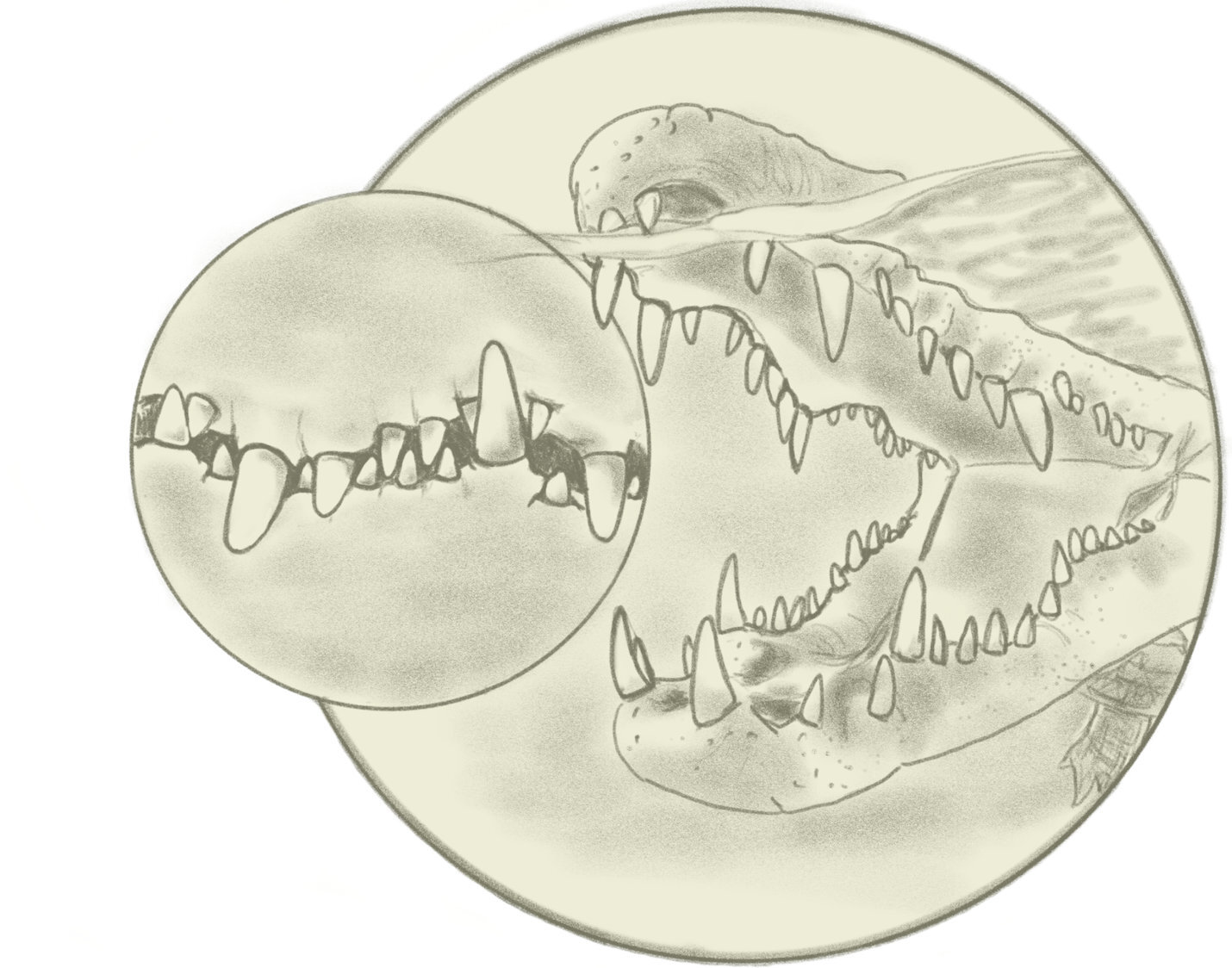..a glimpse at crocodilian
Biology & Behavior
Crocodilians are the world’s largest reptiles, dating back 240 million years to the Triassic period, predating dinosaurs.
They have witnessed the rise and fall of dinosaurs, lived through an ice age and saw the rise of mammals.
Dorsally, underneath their skin, is a network of interconnected bones or ‘osteoderms’ of various shapes and sizes creating an incredibly strong and flexible armor.
Their sense of touch is one of the most acute in the animal kingdom, 10 times more sensitive than the human fingertip.
Crocodiles can shut their jaw 6 times faster than a human can blink. With a pressure up to 6000lbs, they have the strongest known bite force in the animal kingdom.
Crocodiles retain the natural balance in freshwater and estuarine ecosystems. Being predator and prey, they play a vital role in keeping ecosystems healthy.
Teeth are often lost, but beneath each one is a replacement ready to fill the vacancy. Replacement of teeth occurs roughly every 20 months, throughout their life, but slows down as the animal gets older and may stop altogether with older/larger individuals. A crocodile can have up to 5000 teeth in a life time.
Crocodile eyes are the most advanced evolved eyes on the planet, fine-tuned for ambush hunting.
Crocodiles have the most sophisticated heart in the animal kingdom. I
t can control where blood flows around its body.
They engage in sophisticated behavior more complex than any other reptile.
Highly intelligent. They are capable of advanced behavior such as a parental care, complex communication and the use of tools for hunting.
They can put half of their brain to sleep while the other half observes potential prey or threats.
They have one of the fastest spurts of acceleration in the animal kingdom.
Crocodiles don’t appear to be made for running, but in short bursts crocodiles can still run faster than most humans at speeds of up to 17 km/h.
In most voluntary dives, crocodiles stay underwater between 10 to 15 minutes. If the crocodile is trying to hide from a threat, dive time may be longer, up to 30 minutes or more. If pressed, crocodilians can remain underwater for up to 2 hours.
Crocodiles can travel hundreds of miles of ocean via ocean currents
The crocodile has the ability to swim up to 20 km/h, propelling itself through the water with its long, powerful tail.
They vocalize with each other
The number of eggs laid in a single clutch ranges from 7 to 95. Average incubation period is around 80 days.
They are one of the few reptiles to care for their young
Crocodilians are unusual among reptiles in the amount of parental care provided after their young hatch. The mother helps excavate hatchlings from the nest and carries them to the water in her mouth for protection. Newly hatched crocodilians gather together and stay close to their mother from a couple of weeks to up to 3 years in the wild.
Crocodiles are the deadliest predator of the human species. It is estimated there are approximately 1,000 human fatalities from crocodile attacks each year. Though humans are also lethal towards crocodilians.
Crocodile leather is a high fashion material commonly used for accessories such as handbags, boots, watch straps, etc. While many of these leather products come from legal farming industries, the demand for such luxury leather articles has never been higher as hundreds of thousands of crocodiles each year are illegally caught and killed for this multi-million dollar, high-profit black market industry.




















